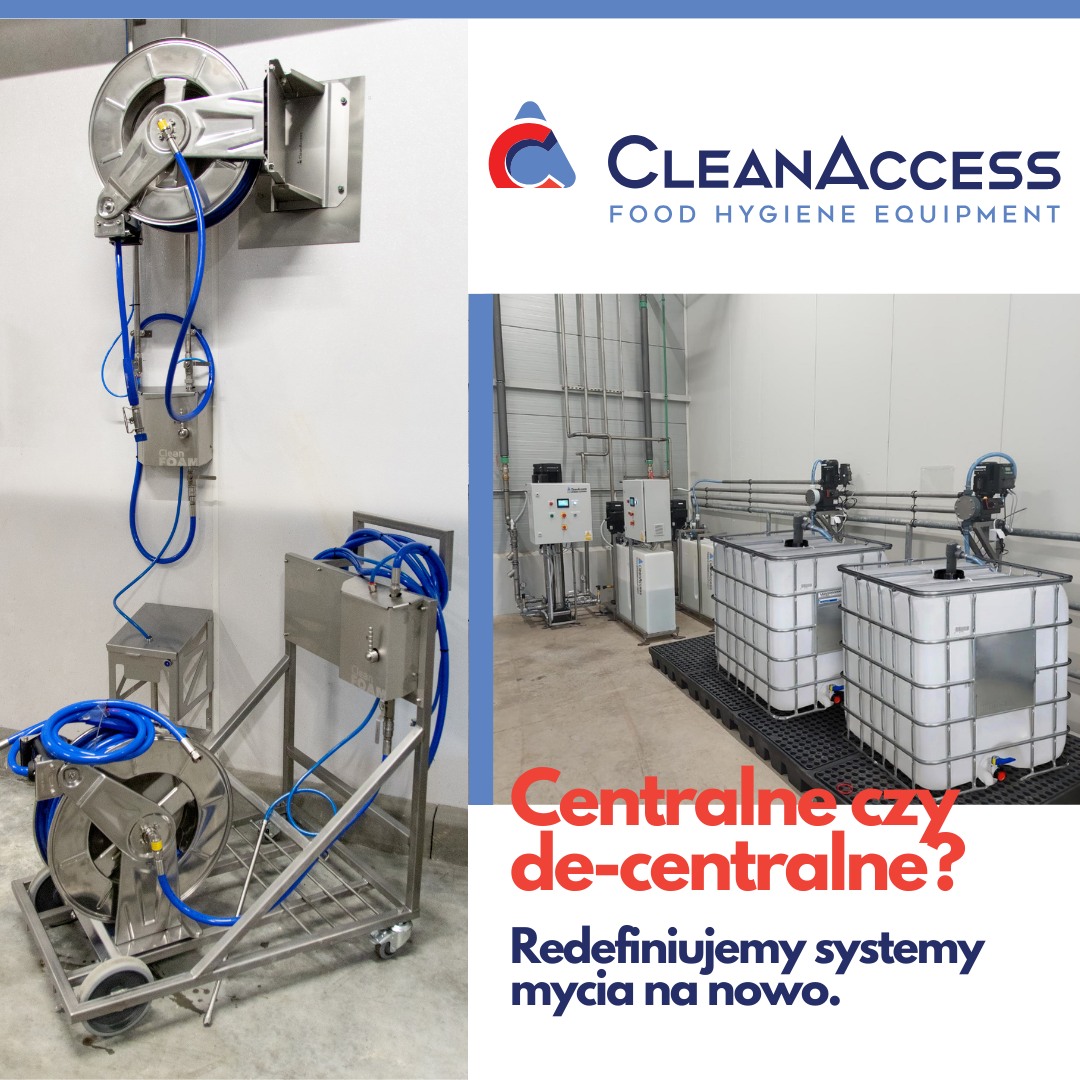
Central or de-Central? Redefining cleaning systems
The constant advancement of technology and the continuous development of our industry requires rethinking and redefining systems. About optimising costs, time and meeting the highest standards of hygiene and safety in food production, say Wojciech Gidel, CEO of CleanAccess, and Paweł Kubala, CleanAccess Sales Director, in an interview with „Rzeźnik polski”. Interviewed by: Karolina Szlapańska
Why do cleaning systems need to be redefined? Where did the concept come from?
Wojciech Gidel: The Polish market has long had the concept of CSM – Central Cleaning System – under which all available foam systems are subsumed. As CleanAccess, we came up with the initiative to separate them and start identifying them in relation to their technology and functions. From our experience, we can confidently say that correctly defining the features of a cleaning system can contribute to a full understanding of the customer’s needs and a better matching of solutions.
Paweł Kubala: We will emphasise this division even more strongly in our direct communication with the customer, which will help him differentiate between these systems and better define his requirements.
You highlight the division of cleaning systems according to technology. Has this been addressed by changing industry market demands?
W.G: Of course it has. Just as many other processes in food production need to be improved and optimised, similar expectations are placed on the hygiene processes of production areas. This is dictated not only by the development of technology, which forces production efficiency into a higher gear, but also by the very high and restrictive hygiene and production safety requirements that are placed on production facilities.
P.K.: I would like to add that it is not only changes in demand that have forced this division but also the main functions of these solutions. The fundamental difference is that in de-central systems, chemicals in canisters are delivered and substituted manually. Central systems, on the other hand, are those in which these products are distributed and delivered to the cleaning points by means of installations.
I understand that the features mentioned above are fundamental. What are the other fundamental differences between these systems that will allow us to better understand and differentiate them?
P.K.: In addition to the way the chemicals are delivered, there is also a difference in the preparation of the so-called working solution. In the case of the de-Central system, which is the most popular solution used not only on the Polish market but also worldwide, it is the satellite at that particular point that is ‘responsible’ for the concentration of the chemical and the preparation of the working solution. In the Central System, on the other hand, the more technologically advanced Preparation Station is responsible for the concentration of the solution, pumping it to the cleaning points by means of a specially designed installation. This allows full control and archiving of operating data, including in the area of costs.
I think this is where we can ask the question – which system is a better choice for production facilities – Central or de-Central?
W.G.: The question is right on point. We get it very often from our customers, both in Poland and in export markets where we have a developed distribution network. However, it is impossible to give a definite answer. Each plant has its own characteristics. We assume that solutions must be customized and optimally adapted. This is also part of our CleanAccess philosophy – customized and rethought systems.
P.K.: When talking to customers, we always try to do a thorough interview and get as much information as possible about the production process, difficulties and expectations. The hygiene plan plays a key role here. These systems are made for people who do a lot of hard work every day, and cleaning a food production plant is not one of the easiest or most pleasant processes (…)
